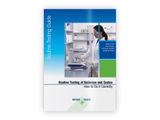To use all functions of this page, please activate cookies in your browser.
my.bionity.com
With an accout for my.bionity.com you can always see everything at a glance – and you can configure your own website and individual newsletter.
- My watch list
- My saved searches
- My saved topics
- My newsletter
Bernardino RamazziniBernardino Ramazzini (November 3, 1633 - November 5, 1714) was an Italian physician. Additional recommended knowledgeBorn in Carpi, Ramazzini was an early proponent of the use of cinchona bark (from which quinine is derived) in the treatment of Malaria. His most important contribution to medicine was his work on occupational diseases called De Morbis Artificum Diatriba (Diseases of Workers) which outlined the health hazards of chemicals, dust, metals, and other agents encountered by workers in 52 occupations. This was one of the founding and seminal works of occupational medicine and played a substantial role in its development. He served as professor of medicine at the University of Padua from 1700 until his death. In regards to malaria, Ramazzini was one of the first to support the use of the quinine-rich bark cinchona. Many falsely claimed that quinine was toxic and ineffective, but Ramazzini recognized its importance. He is quoted, "It [quinine] did for medicine what gun powder did for war."[1] He died in Padua in 1714. References
Notes
|
| This article is licensed under the GNU Free Documentation License. It uses material from the Wikipedia article "Bernardino_Ramazzini". A list of authors is available in Wikipedia. |







